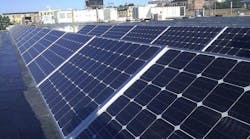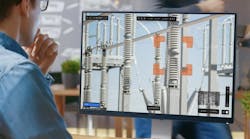Q: No challenge, just a question: I have a grid-tied PV system and my service lateral from utility is the only one connected to the load side of the utility transformer at the pole. Is the PV power generated and back fed to the utility actually going backward through the transformer and supplementing the utilities primary power lines? I can't seem to get my head around this, is this a myth?
A: It depends if your grid-tied PV has the capability and your home service has a two-way meter and you have a contract with the utility that will allow you to sell the power back to the grid. If the answer to all of it is yes then the transformer has no problem to take the power either way. Transformer is a bi-directional device and will allow the power flow "backwards". In fact for the transformer it really does not matter. Again the main enabler of the reverse power flow are your PV inverter and the two -way meter at the connection point with the utility.
Good luck,
That's it.
Mietek Glinkowski
Director of Technology, Power Products
ABB
As Mietek explained, there is no question that your PV power will go back through the distribution transformer if the amount of power being generated by the PV system exceeds the amount of load on the secondary (load side) of the transformer. Of course, the transformer, being a bi-directional device, will raise the voltage to a magnitude near that of the distribution system. That is why it is so important that the PV system not feed any power back through the transformer when there is an outage on the grid distribution system. That would create a hazard for the public and utility personnel.
While the inverters on PV systems that are compliant with contemporary standards are designed to not backfeed into a deenergized grid, other types of distributed generation (DG) can can be less 'intelligent' and produce dangerous conditions if solidly connected to the grid source. This can be a particular problem if the DG system is designed to 'stand alone' and furnish power in case of a grid outage. Even PV systems with battery storage fall into that category. With proper DG system design there are ways to avoid these hazards, but it does add cost to the system.
Safety must always be the first priority.
Ed Thomas
Utility Electrical Consultants, PC
See previous questions and answers and join the discussion. Add your comments below:


